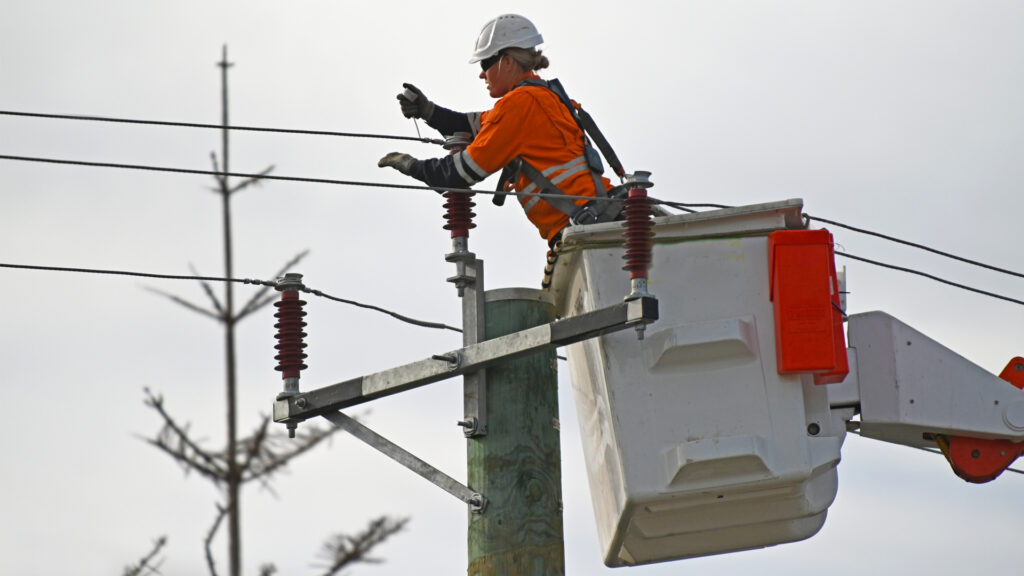By Michael Liebman and Meredith Cowart, RMI
Communities in areas with extreme weather like Florida, Puerto Rico and Texas last month are fed up. Increasingly frequent storms cause extended power outages, put safety at risk and damage buildings and key infrastructure.
Though it is a matter of when, not if, the winds will come again, as soon as clean-up is finished, leaders move energy resilience and preparedness to the back burner and the cycle continues into the next storm. But energy technologies like solar and battery storage have proven time and again to lessen the blows, and now they’re more affordable than ever.
So why aren’t we scaling them up for resiliency ahead of impending weather?
Unfortunately for the over 60 million people who live in hurricane-affected areas, more extreme weather events are likely on the way. Forecasts for the 2024 season, which started June 1, are disconcerting. The National Oceanic and Atmospheric Administration (NOAA) predicts an above-normal 2024 Atlantic hurricane season with 17-25 named storms.
Communities are eager for solutions, and solar-plus-battery storage microgrids — designed to keep power flowing during a storm, lower emissions and facilitate economic development — provide. They allow one or several connected buildings to generate, store and use energy within their site, with or without power from the grid. In an outage, the electricity created by these systems keeps refrigerators running, phones charging, air conditioners cooling, and houses lit up.
Military bases, hospitals, fire stations and other critical service providers have been turning to solar-plus-storage microgrids for years, and for good reason. They know that in an outage, external entities dealing with multiple crises and fossil fuel supply chains are not reliable. The U.S. Army plans to build a carbon pollution-free microgrid at each of its 130 bases worldwide by 2040 to keep up critical defenses in the event of a natural disaster or an attack on the U.S. power grid.

When Hurricane Ian hit Florida, Georgia, Virginia and the Carolinas in 2022, more than 2 million people lost power. But microgrids kept critical services running at hospitals, universities, homes and businesses.
New incentives paired with dropping equipment prices mean that there has never been a better time for communities to ramp up solar-plus-storage microgrids. Despite recent inflation, the price of solar for commercial projects is less than half what it was a decade ago, dropping from $3.83 per watt in 2013 to $1.62 per watt in 2023. Battery prices also recently hit a record low in 2023 at $139 per kWh compared to $780 in 2013.
Not only is this technology getting cheaper, but there are more government incentives than ever to help cover costs, both before a storm hits and during the rebuilding process. A few of the most momentous funding opportunities for community microgrids include:



Such funding streams mean that it may be cheaper for a church or government to finance a solar-plus-storage microgrid than to pay the utility every month for their electricity.
Community leaders, city planners and utilities need to ask tough questions before storms arrive. Where in my community should renewable microgrids be built to keep people safe in the next hurricane? How can we use the funding now available to pay for microgrids?
This hurricane season will bring resiliency planning to the front burner for a short while — let’s use that time wisely.
Michael Liebman and Meredith Cowart are experts in carbon-free electricity at RMI, a global nonprofit working to accelerate the energy transition. This opinion piece was originally published by the Miami Herald, which is a media partner of The Invading Sea.
If you are interested in submitting an opinion piece to The Invading Sea, email Editor Nathan Crabbe at ncrabbe@fau.edu. Sign up for The Invading Sea newsletter by visiting here.



